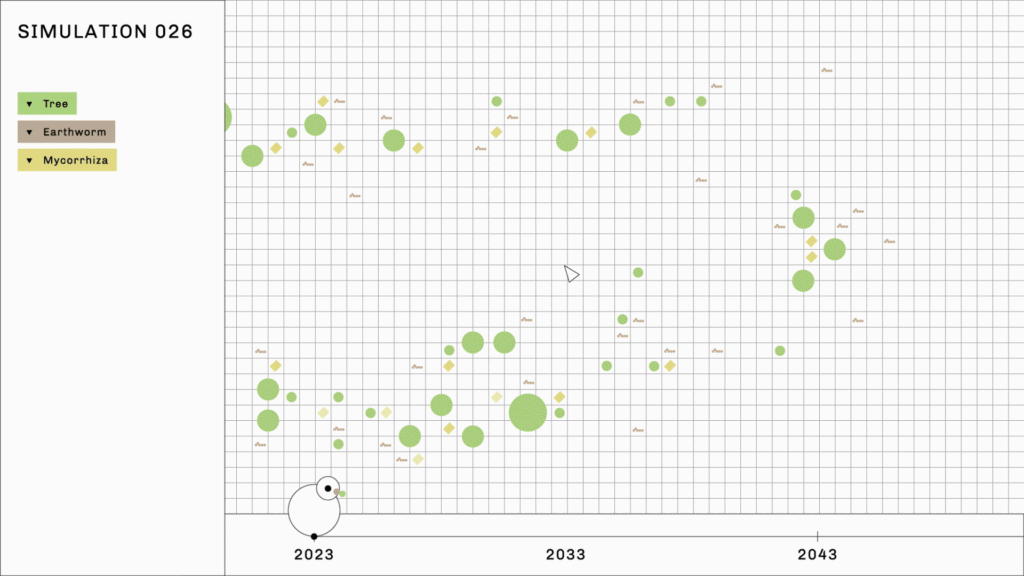Eco-Urban Futures (DCODE Labs)
Urban forests are now being digitalized as smart green infrastructures to mitigate environmental change. Cities are proactively planting and replacing trees considering their future ecosystem benefits, such as carbon sequestration, urban heat reduction, and water retention.
One of the key technologies that promote forests’ transition into infrastructures is digital twin simulation. Utilizing a digital replica of the forest, diverse granular computational experiments can be conducted under different management schemes. In many smart cities, these simulation data facilitate more efficient and effective management of forest ecosystems by informing city governments or urban planners on deciding which trees to plant and where (Pinho et al., 2018). For example, in cases where the benefits of an urban forest far exceed its costs, it provides a compelling argument for maintaining the forest. In this way, more investment can be made into the forest to generate more carbon, water, health, energy, economic, and social benefits.
Despite its positive prospects, however, underlying ontologies of the digital forest are rarely questioned, often lacking consideration for the flora and fauna inhabiting the forests. In order to minimize the computational cost, the liveliness of forest ecosystems and capabilities are often diminished in the model. Since urban forests are often tied to and valued for the ecosystem services they provide, data that can indicate the forest’s performance such as height and canopy cover are commonly used, while missing other crucial forest data. These overlooked dimensions include temporal differences, diverging boundaries (e.g. proximity to other trees and roots, water, fungi), the presence of family members or kin, and capabilities such as finding water, seasonal response, and plant learning (Prebble et al., 2021).

When trees stray from human standards of what is acceptable and desirable, they become targets of removal. While their ecosystem benefits or potential risk factors serve as primary indicators in deciding whether the trees belong to a certain location or not, neither such value nor risk is inherent to trees. Rather, whether those trees belong is a relational question; a question that requires consideration of relations which trees form as they grow in certain places over time (Phillips & Atchison, 2018). Then the challenge is no longer a simple question of ‘What species should we plant and where?’ but ‘How can the negotiation with trees and others be made beyond the temporal, spatial, and agential disjuncts between human nonhumans?’
Acknowledging that humans coexist with other forms of life, Eco-Urban Futures takes a more-than-human approach in designing the computational model and a simulation platform. In the design process, the notion of more-than-human bodies was used as a strong concept to explore alternative modes of making sense of and acting upon data toward more-than-human forest governance.
The designed interface enables users to navigate the forest data across diverse temporal, spatial, and agential scales, thereby urging policymakers, urban planners, and citizens to reimagine healthier futures for us-with-the-forest. For example, in the platform, the user can design his or her own timeline with diverse cyclical and biological clocks to curate the events in the simulation. Moreover, the forest data is interpreted and shown from the perspectives of certain species or clusters, rather than graphs or numerical values.
In this project we worked with Lucidminds.

